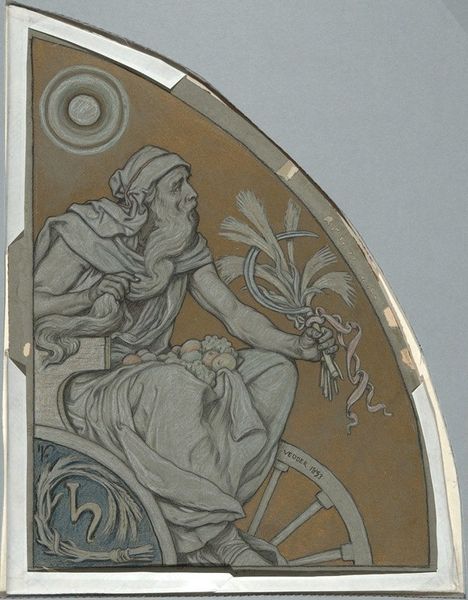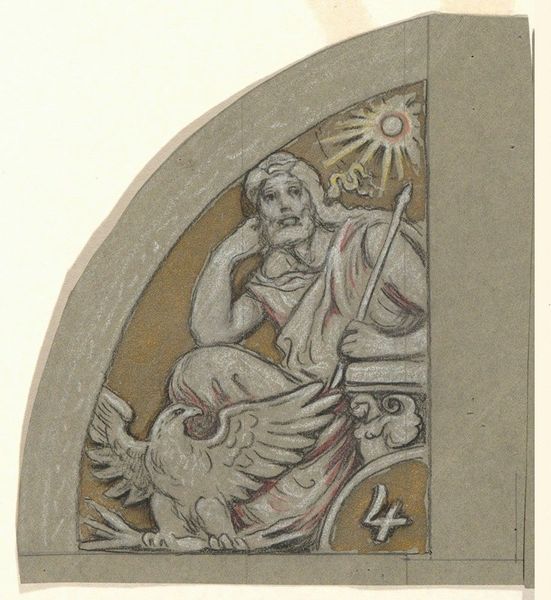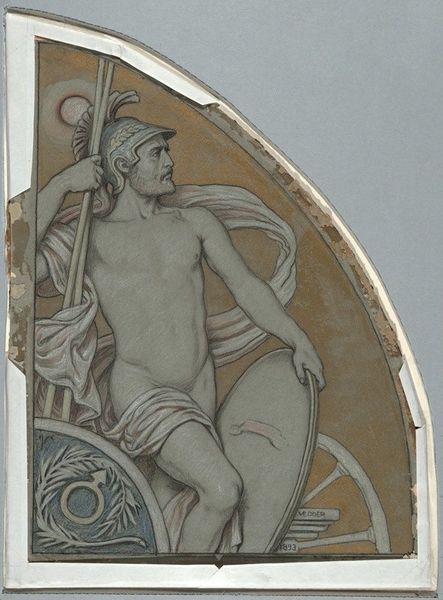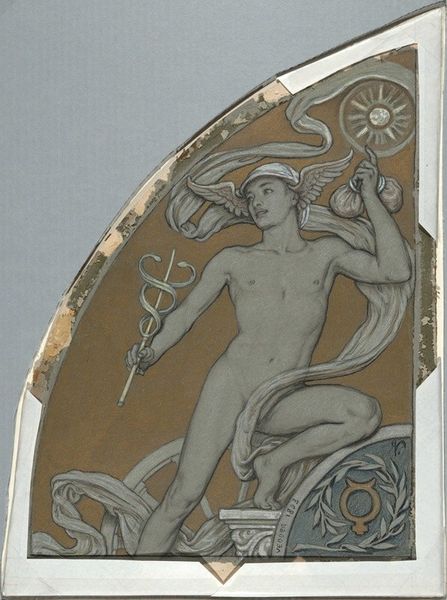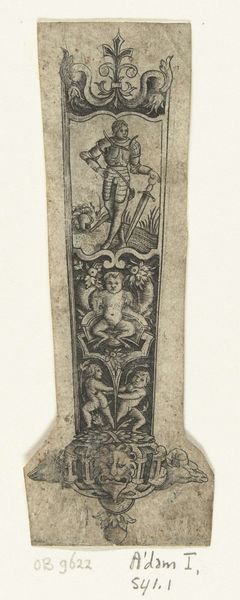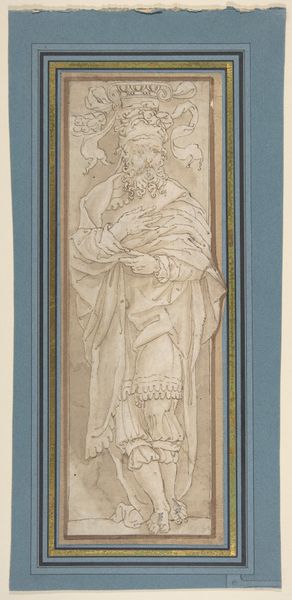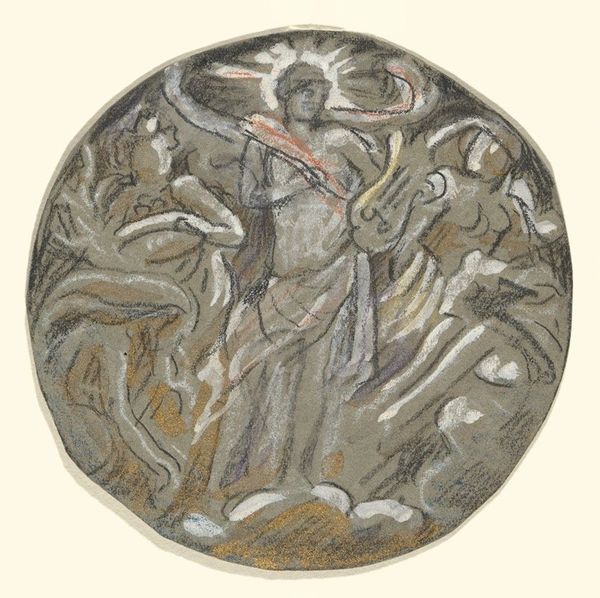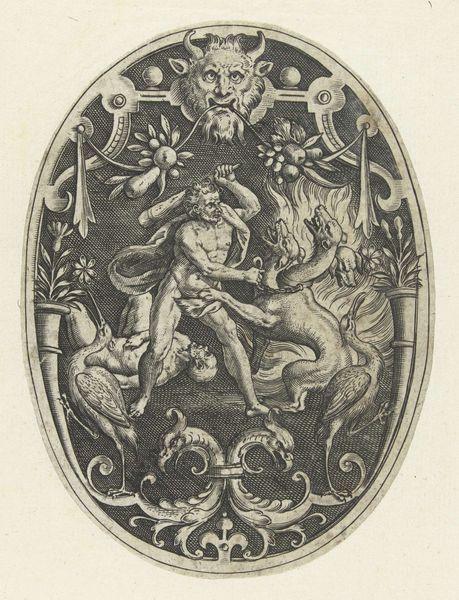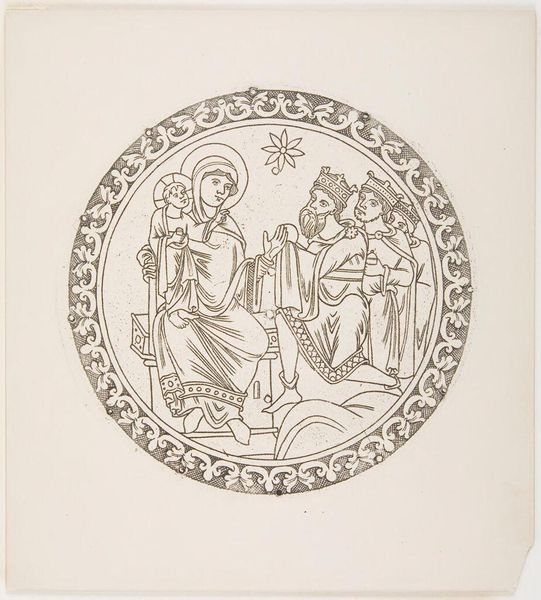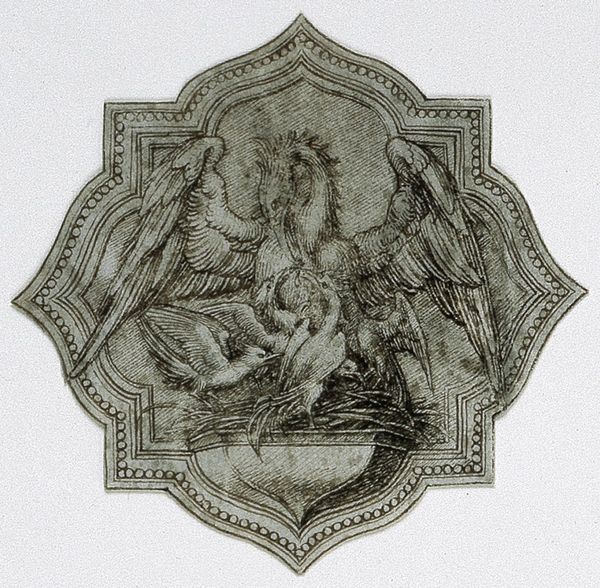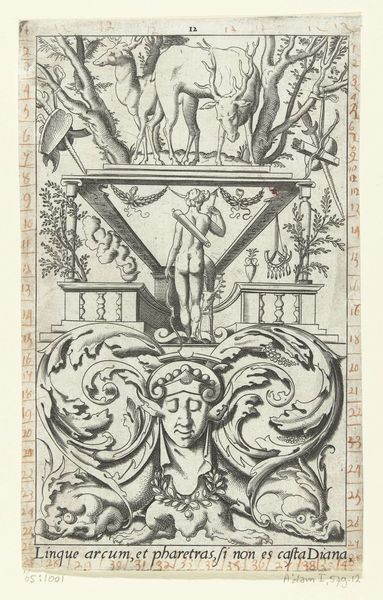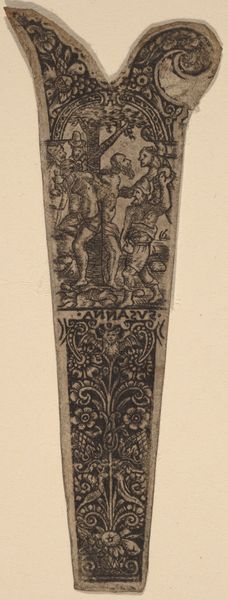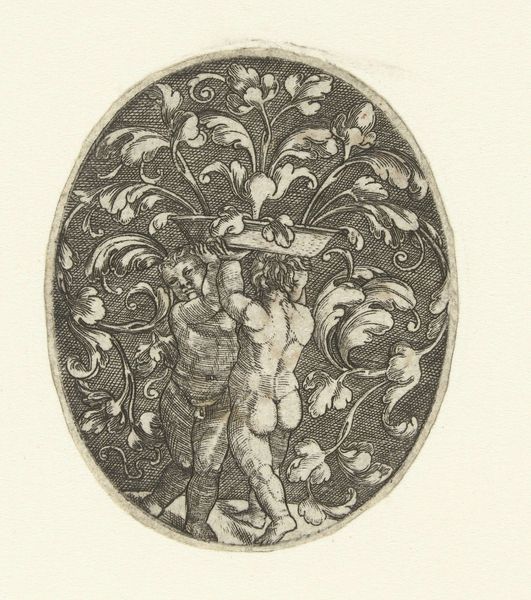
drawing, coloured-pencil, pencil
#
drawing
#
coloured-pencil
#
allegory
#
classical-realism
#
coloured pencil
#
pencil
#
symbolism
#
history-painting
Copyright: Public Domain: Artvee
Curator: Before us, we have Elihu Vedder’s "Cartoon for Jupiter," a colored pencil and pencil drawing from 1893. It's quite striking. Editor: My first impression is a kind of… subdued grandeur. The muted colors give it a somewhat melancholic feel, despite the obviously powerful figure depicted. It makes me think about power and its burdens. Curator: That's a fascinating reading. Consider that Jupiter, in Roman mythology, is the king of the gods, associated with law, order, and governance. Vedder’s rendition certainly reflects this traditional iconography but, as you note, tinged with a sense of pensiveness, the brow furrowed. The eagle at his feet reinforces his dominion, it’s Jupiter’s traditional attribute as well. Editor: Absolutely. But looking closer, the context is vital. Vedder was part of the American Renaissance, seeking to establish a cultural identity tied to European traditions. In this sense, appropriating classical mythology speaks volumes about the aspirations – and potential pitfalls – of a nation trying to define itself through art. It hints at ideas around immigration and nationality itself in the construction of power and art. Curator: And the choice of media lends itself well to this symbolic tension, doesn’t it? Pencil and colored pencil… these aren't the typical grand materials of state portraits like oils or sculpture. It feels more approachable, almost like a blueprint. Editor: I agree. And Vedder’s inclusion of details like the small, almost hidden, cherubic figure nestled by Jupiter’s throne really complicate that idea of infallible power, it also seems like another way to signal towards classicism. I also see some dates with a 4 and some laurel. What does that tell us? Curator: Ah! Look closer and you’ll notice there is also a ‘July’ there, as well as an American flag held by that putto! The ‘Cartoon for Jupiter’ was made as preparatory drawing for a mosaic at the Library of Congress’ Northwest Pavilion, also housing other drawings on Minerva, Apollo and others. It celebrates core symbolic features of the American identity through the classic form, referencing American values to ancient Roman symbols of power, arts, or reason. It signals at its core, to the symbolic role of those ideas for Americans at that specific time. Editor: That adds so much. It is indeed very telling about how America envisioned its own mythology and values through this appropriation of classical symbols at the turn of the century, isn't it? Thanks, this piece truly does reflect so many social values we still discuss today. Curator: My pleasure. Seeing how lasting icons change and adapt over time is always revealing.
Comments
No comments
Be the first to comment and join the conversation on the ultimate creative platform.
